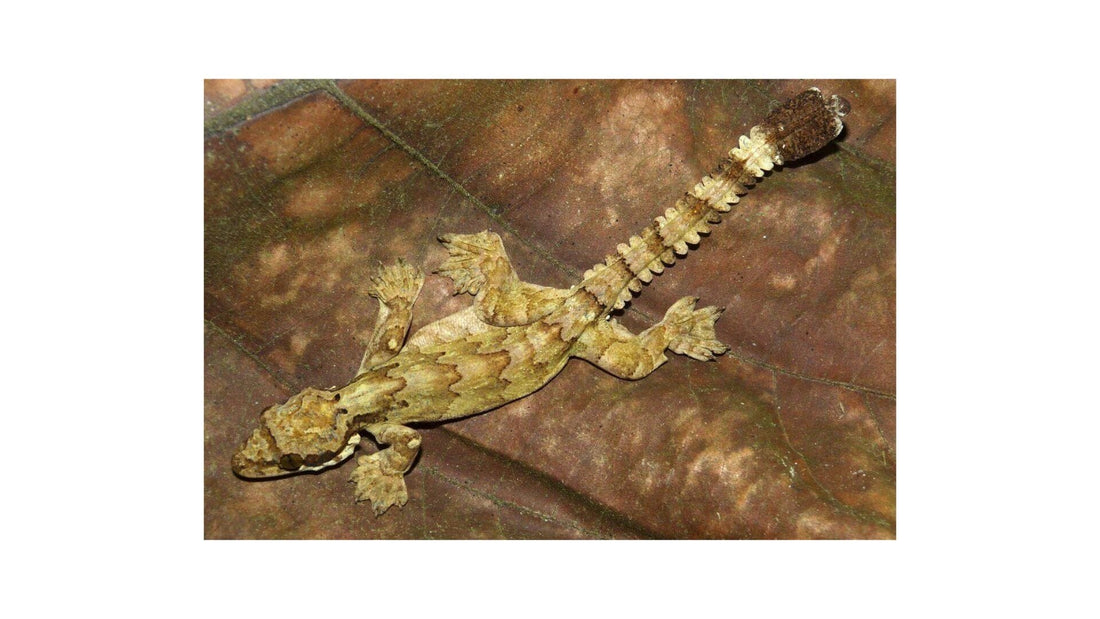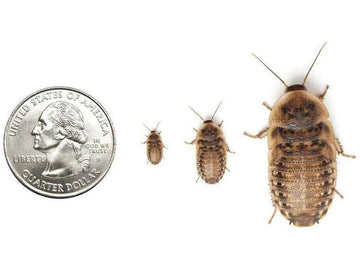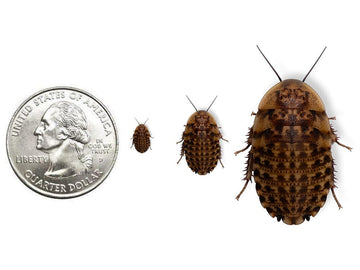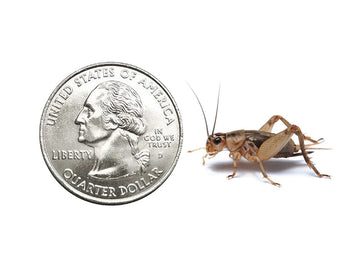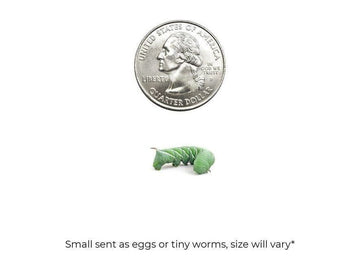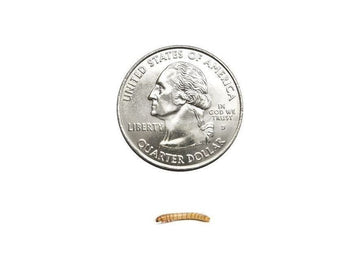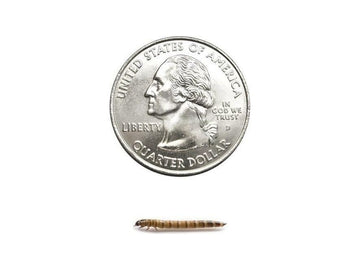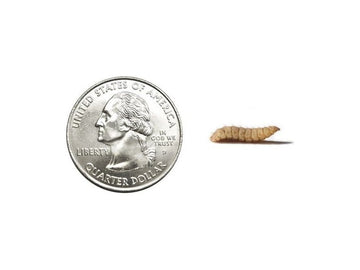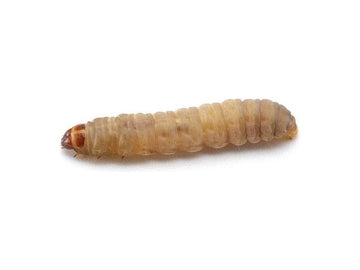The flying gecko (Ptychozoon kuhli) is a 6-8” long, arboreal, nocturnal lizard native to southeast Asia. They prefer tropical forests, where they spend most of their time gliding from branch to branch in the canopy.
Flying geckos have a triangular head, large lidless eyes, large webbed feet, a blunt serrated tail, and flaps of skin on each side to help them glide. They typically have a creamy base color with jagged tan to dark brown markings.
Flying geckos are delicate and sensitive to poor husbandry, making them intermediate-level pet reptiles. When acquired captive-bred and well cared-for, they may have up to a 10 year lifespan.
Minimum terrarium size for flying geckos
Flying geckos may be small, but they should be provided enough space to permit them to glide, which is a big part of their natural behavior. The minimum recommended terrarium size for a single flying gecko is 24”L x 18”W x 36”H. Of course, larger is always better!
Housing multiple flying geckos in the same terrarium can be successful if only females are housed together, and only in a group of two or three. Housing males together is likely to result in fighting, and males and females together will breed. We recommend only attempting this if you are experienced with the species, and you will want to consider a larger enclosure for more than one if so.
Do flying geckos need UVB?
Technically they can survive without it, but we still recommend providing appropriate UVB lighting for flying geckos. Flying geckos are crepuscular, which means they are most active during twilight hours. UVB lighting helps provide a clear day/night cycle, provides all of the vitamin D that your pet needs, strengthens the immune system, facilitates better digestion, and other benefits.
The best UVB bulbs for flying geckos are:
- Arcadia T5HO 6% - if about 12"-15" away
- Zoo Med T5HO 5.0 - if about 12"-18" away
- Arcadia ShadeDweller Kit - if about 8"-12" away
For best results, house the UVB bulbs in a fixture with a reflector roughly 2/3 the length of the enclosure. Position the lamp on the same side of the terrarium as the heat lamp. UVB is blocked by glass and plastic, so placing the terrarium in front of a window doesn’t count as “free UVB” — in fact it can make your terrarium too hot due to the greenhouse effect. Don’t forget to replace your bulb every 12 months!
We recommend lighting to be on 8-12 hours per day, depending on the time of year. You can do less hour on in the winter and more hours on in the summer. Remember to turn lighting off at night.
Best temperature for flying geckos
Despite the popular myth that flying geckos do best at room temperature, they do benefit from having a low-temperature “basking” area. After all, they’re still reptiles, and that means they need a range of temperatures in their enclosure that allow them to thermoregulate.
Flying geckos do great with a basking/surface temperature around 93°F-95°F, as measured by a temperature gun. The cool zone of the enclosure should stay between 75-85°F. Nighttime temperatures can drop wuite low, we recommend adding supplemental night heating if it drops much lower than 63°F. Ambient temperatures can be measured via a digital probe thermometer.
You can provide heat for your gecko with a white heat bulb. If you need supplemental nighttime heat, we recommend a lightless heat source like a ceramic heat emitter or radiant heat panel.
Best humidity levels for flying geckos
Flying geckos are a tropical species, so the humidity inside their enclosure should be fairly high: 70-85% on average. Occasional lows down to 60% during the day and highs up to 100% at night are acceptable. Humidity can be measured via digital probe hygrometer, with the probe placed in the middle of the terrarium.
You can increase humidity by misting your gecko’s enclosure 1-2x/day with a spray bottle or an automatic misting system. Mist every evening and then again in the morning if needed. Aside from raising humidity, this also provides your gecko with an important source of drinking water! To further boost humidity, you can use a cool mist humidifier.
Best substrate for flying geckos
Providing a layer of naturalistic substrate (“bedding”) will help maintain correct humidity levels and also helps make your enclosure more attractive! We recommend the following substrates for flying geckos:
- Zoo Med Eco Earth
- Zoo Med ReptiSoil
- Exo Terra Plantation Soil
- Zilla Jungle Mix
- Home-made soil/sand mixture
Layering clean, chemical-free leaf litter on top of the substrate can also help with humidity.
We suggest substrate to be at least 2” deep and completely replaced every 3-4 months. Remove poop and urates daily, along with any contaminated substrate.
How to decorate a flying gecko terrarium
An empty terrarium makes for a bored gecko. Keep your pet entertained and engaged with its environment with the strategic use of décor items that encourage it to exercise natural behaviors!
Since flying geckos are strictly arboreal, at bare minimum you will want a couple of branches for your gecko to climb on and some live or artificial foliage for it to hide in. However, it’s best to include other items, such as:
What to feed to a flying gecko
Flying geckos are insectivores, which means that they need to eat a variety of live insects in order to get the right nutrition for their bodies. How often flying geckos need to eat depends on age: Juveniles should be fed daily, and adults should be fed every 2-3 days. We recommend offering about 5-8 bugs per gecko, give or take, depending on your gecko's individual body condition.
Feeder insects for flying geckos: dubia roaches, discoid roaches, crickets, grasshoppers, silkworms & moths, waxworms & moths, superworms, mealworms, black soldier fly larvae & flies, and hornworms.
The key to balanced nutrition is variety, so we recommend a rotation of as many different foods as possible. Crested gecko diet can also be offered as an occasional treat.
Supplements
You will also want a calcium supplement. This is our recommended schedule for supplementing a flying gecko:
Every feeding: (one) calcium without D3
About 2x/month: (one) multivitamin
Water
We recommend a wall-mounted water bowl. Flying geckos mostly prefer to lap droplets of water off walls and leaves after the enclosure has been misted, but it’s still important to provide a more consistent drinking source as well. Change the water daily and scrub the bowl with a reptile-safe disinfectant weekly, or whenever it becomes soiled.
How to handle your flying gecko
Flying geckos are very delicate and fast, so it’s best not to try handling them. They can also drop their tails if frightened, so be aware of that. If you want to bond with your gecko, try hand-feeding it with a pair of feeding tweezers instead.
*This care sheet contains only very basic information. Although it’s a good introduction, please further your research with high-quality sources. The more you know, the better you will be able to care for your pet!

